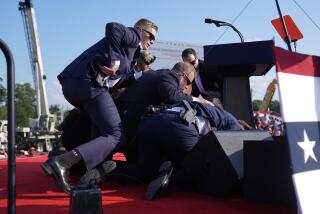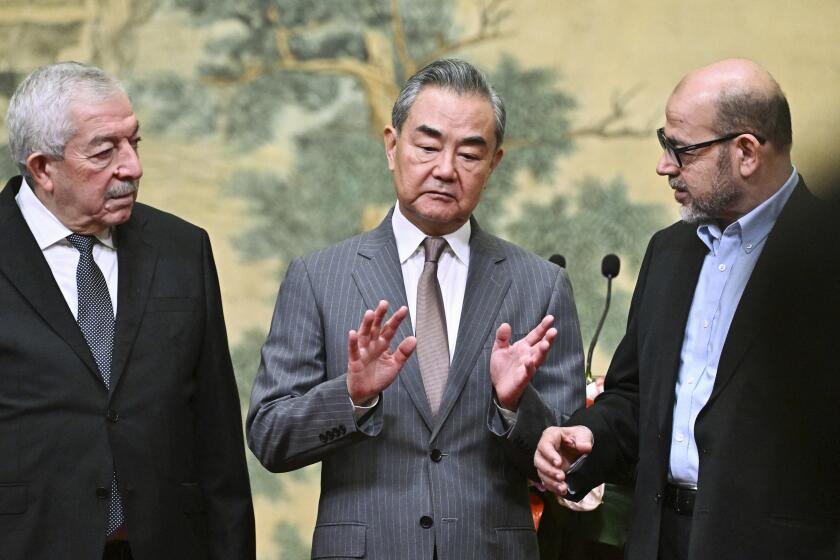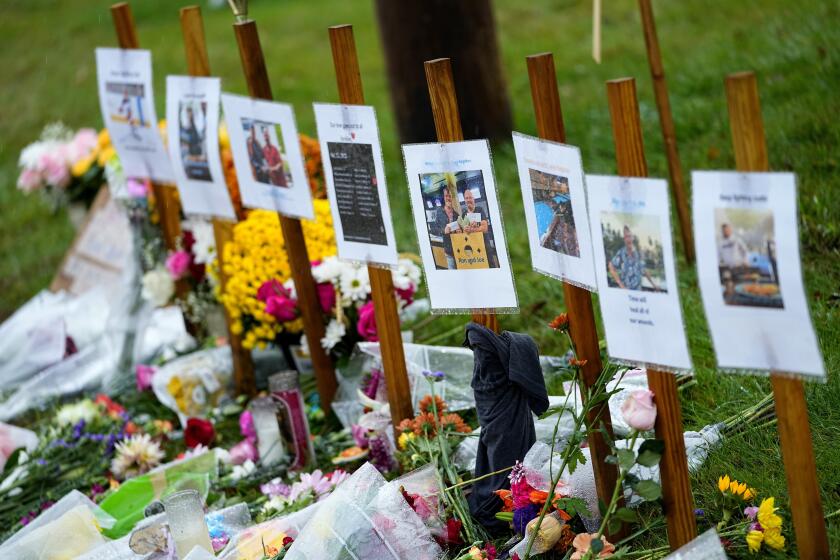Marcus Aurelius Faces Shut-In Life in Rome : Despite Restoration, Rome’s Proud Aurelius Likely Faces Shut-In’s Life
Marcus Aurelius is flat on his back, his noble horse riderless. But the ancient Roman emperor seems to be taking the indignity in stride, as a good Stoic philosopher should.
Much more so than his caretaker of the last 7 1/2 years, Alessandra Melucco, who has directed the restoration of the 1,800-year-old gilded bronze statue since its removal in 1981 from the center of the Campidoglio, Rome’s municipal square crowning the Capitoline Hill.
“No pictures, please, of Marcus lying down,” Melucco said. “Marcus doesn’t want to be seen that way.”
“That way” finds the emperor atop a pair of planks, his legs attached to pulleys, and his mount a few yards away in a workroom of Rome’s Central Restoration Institute at San Michele, a former monastery across the Tiber River from City Hall.
Project Nears Completion
By summer’s end, the challenging restoration of rider and horse, which have become a kind of symbol of Rome’s “eternalness,” should be complete.
But it looks as if the famous pair won’t last much longer, let alone an eternity, if they reclaim their perch atop their marble pedestal, designed by Michelangelo, in the heart of Campidoglio Square, also the work of the Renaissance master.
If worst fears come true, the emperor, who ruled from AD 161 to 181, won’t even be able to remount his horse.
The ages have taken their toll, especially the 20th Century, with its corrosive automobile pollution and unsettling traffic vibrations.
Writing a Prescription
Deciding where the statue will wind up is like writing a prescription “for a sick man who has had a heart attack,” said Anna Sommella, director of archeology for the Capitoline Museums, which overlook the square.
“He can decide to live for only a short time but be like everybody else and go outside, or he can decide he wants to last as long as possible,” she said.
To last as long as possible, she explained, would mean shelter in a museum for Marcus Aurelius, away from pollution and other disagreeable aspects of Rome’s outdoors.
The City Council will make the final decision after considering the opinion of the restoration institute and museum personnel, Sommella said.
Although the question is officially still open, the prescription seems all but written. Marcus Aurelius and his steed, believed cast in AD 176, appear destined for indoor life, with a copy taking their place in the square.
Senatorial Palace
The top contender for the statue is the Senatorial Palace, another Capitoline Hill architectural treasure.
Restorers began work in the spring of 1987 with lasers, scalpels and brushes after three years of testing and a long pause for fund raising. An insurance company paid more than half of the $825,000 cost.
Melucco, the restoration director, said the operation has turned up several problems that weigh on the statue’s longevity.
For example, in 1836, a then-illustrious group of Rome archeologists decided that the statue was leaning and poured a mixture of metals into one of the horse’s legs to steady it.
“Instead, it made it worse, and we found the metals could not be removed,” Melucco said.
Second Statue
Three of the mount’s legs touch ground but the fourth curves gracefully in the air. Historians believe that until at least the 12th or 13th century, that fourth leg rested upon another statue, whose fate is unknown.
Moving Marcus around didn’t help, either. Pope Paul III ordered the monument moved to the Campidoglio in 1538 from the area of the Lateran Palace, which had been a papal residence.
More to Read
Sign up for Essential California
The most important California stories and recommendations in your inbox every morning.
You may occasionally receive promotional content from the Los Angeles Times.





